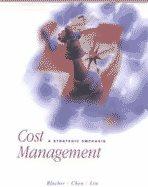






4 Totals 1,420 units 880 units Part 1 of 4 For specific identification, the March 9 sale consisted of 70 units from beginning inventory and 450 units from the March 5 purchase; the March 29 sale consisted of 140 units from the March 18 purchase and 220 units from the March 25 purchase. 2.5 points Problem 5-1A (Algo) Part 1 eBook Required: 1. Compute cost of goods available for sale and the number of units available for sale. Print References Cost of Goods Available for Sale Cost of Goods Available # of Units Unit for Sale Cost per Beginning inventory Purchases: March 5 March 18 March 25 Total ! Required information Problem 5-1A (Algo) Periodic: Alternative cost flows LO P1 [The following information applies to the questions displayed below.) Warnerwoods Company uses a periodic inventory system. It entered into the following purchases and sales transactions for March Units Sold at Retail Units Acquired at Cost 200 units @ $90 per unit 500 units @ $95 per unit Date Activities Mar. 1 Beginning inventory Mar. 5 Purchase Mar. 9 Sales Mar. 18 Purchase Mar. 25 Purchase Mar. 29 Sales 520 units @ $125 per unit 320 units @ $100 per unit 400 units @ $102 per unit 360 units @ $135 per unit 880 units Totals 1,420 units For specific identification, the March 9 sale consisted of 70 units from beginning inventory and 450 units from the March 5 purchase; the March 29 sale consisted of 140 units from the March 18 purchase and 220 units from the March 25 purchase. Units Sold at Retail Mar. Units Acquired at Cost 200 units @ $90 per unit 500 units @ $95 per unit 520 units @ $125 per unit Date Activities 1 Beginning inventory Mar. 5 Purchase Mar. 9 Sales Mar. 18 Purchase Mar. 25 Purchase Mar. 29 Sales Totals 320 units @ $100 per unit 400 units @ $102 per unit 360 units @ $135 per unit 880 units 1,420 units For specific identification, the March 9 sale consisted of 70 units from beginning inventory and 450 units from the March 5 purchase; the March 29 sale consisted of 140 units from the March 18 purchase and 220 units from the March 25 purchase. Problem 5-1A (Algo) Part 2 2. Compute the number of units in ending inventory. Ending inventory units 400 units @ $102 per unit Mar. 25 Purchase Mar. 29 Sales Totals 360 units @ $135 per unit 880 units 1,420 units For specific identification, the March 9 sale consisted of 70 units from beginning inventory and 450 units from the March 5 purchase; the March 29 sale consisted of 140 units from the March 18 purchase and 220 units from the March 25 purchase. Problem 5-1A (Algo) Part 3 3. Compute the cost assigned to ending inventory using (a) FIFO, (b) LIFO, (C) weighted average, and (d) specific identification. (Round your "average cost per unit" to 2 decimal places.) a) Periodic FIFO Cost of Goods Available for Sale Cost of Goods Sold Ending Inventory # of units Cost per unit Cost of Goods Available for Sale # of units sold Cost per unit Cost of Goods Sold # of units in ending inventory Cost per unit Ending Inventory Beginning inventory Purchases: March 5 March 18 March 25 Total ob b) Periodic LIFO Cost of Goods Available for Sale Cost of Goods Sold Ending Inventory b) Periodic LIFO Cost of Goods Sold Ending Inventory Cost of Goods Available for Sale Cost of Cost per Goods # of units unit Available for Sale # of units sold Cost per unit Cost of Goods Sold # of units in ending inventory Cost per unit Ending Inventory Beginning inventory Purchases March 5 March 18 March 25 Total c) Average Cost Cost of Goods Available for Sale Cost of Goods Sold Ending Inventory Average Cost per unit # of units # of units Cost of Goods Available for Sale Average Cost per Unit Cost of Goods Sold # of units in ending inventory Average Cost per unit Ending Inventory sold Beginning inventory Purchases: March 5 March 18 March 25 Total d) Specific Identification Cost of Goods Available for Sale Cost of Goods Sold Ending Inventory March 5 March 18 March 25 Total ook rint d) Specific Identification Cost of Goods Available for Sale Cost of Goods Sold Ending Inventory rences Cost per # of units Cost per unit Cost of Goods Available for Sale # of units sold Cost of Goods Sold # of units in ending inventory Cost per unit Ending Inventory unit Beginning inventory Purchases March 5 March 18 March 25 Total Warnerwoods Company uses a periodic inventory system. It entered into the following purchases and sales transactions for March Units Sold at Retail Units Acquired at Cost 200 units @ $90 per unit 500 units @ $95 per unit 520 units @ $125 per unit Date Activities Mar. 1 Beginning inventory Mar. 5 Purchase Mar. 9 Sales Mar 18 Purchase Mar. 25 Purchase Mar. 29 Sales Totals 320 units@ $100 per unit 400 units @ $102 per unit 360 units @ $135 per unit 880 units 1,420 units For specific identification, the March 9 sale consisted of 70 units from beginning inventory and 450 units from the March 5 purchase; the March 29 sale consisted of 140 units from the March 18 purchase and 220 units from the March 25 purchase. Problem 5-1A (Algo) Part 4 4. Compute gross profit earned by the company for each of the four costing methods. (Round your average cost per unit to 2 decimal places and final answers to nearest whole dollar.) FIFO LIFO Weighted Average Specific Identification Sales Less: Cost of goods sold Gross profit













